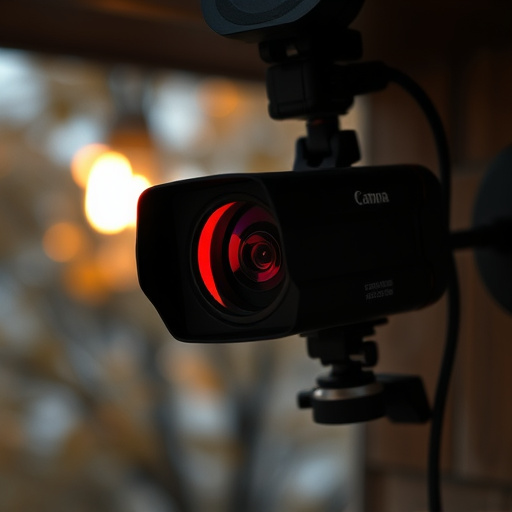RF technology powers covert cameras in home offices, offering stealth and ease of installation for enhanced security. Proactive measures include visual inspections and RF detection tools to safeguard against hidden cameras. Legal considerations regarding privacy and surveillance laws are crucial when using covert cameras, ensuring ethical use and avoiding legal repercussions.
Hidden cameras using radio frequency (RF) technology have become a growing concern in both personal and professional spaces, including home offices. This comprehensive guide delves into the world of RF surveillance devices, offering insights on how to identify them. We explore common locations where covert cameras might be hidden, introduce tools for detection, and highlight legal aspects to consider when safeguarding your privacy. Stay ahead of potential threats and secure your home office from unseen eyes.
- Understanding Radio Frequency (RF) Technology in Cameras
- Identifying Potential Covert Camera Locations at Home
- Tools and Devices for Detecting Hidden RF Signals
- Legal Considerations When Checking for Hidden Cameras
Understanding Radio Frequency (RF) Technology in Cameras
Radio Frequency (RF) technology plays a pivotal role in the operation of many devices, including modern covert cameras designed for home offices or any private space. These tiny yet powerful cameras utilize RF signals to transmit video data wirelessly over short distances, ensuring a seamless connection with receivers or recording devices. Understanding how RF works is crucial when it comes to detecting hidden cameras, as it allows individuals to identify potential surveillance equipment that may be operating unbeknownst to them.
RF-enabled covert cameras offer several advantages for home and office security. They can be easily installed, often without the need for complex wiring, making them attractive for discreet monitoring. The technology’s ability to transmit data wirelessly makes these cameras nearly invisible to the naked eye, especially when integrated into everyday objects like light switches or electrical outlets. This stealthy nature is a double-edged sword, as it enhances privacy but also necessitates proactive measures to ensure against covert surveillance, particularly in high-security environments where professional installation and regular maintenance of RF detection systems are recommended.
Identifying Potential Covert Camera Locations at Home
When it comes to identifying potential covert camera locations at home, especially in a home office setting, it’s crucial to be vigilant and proactive. Start by examining any obvious places where hidden cameras might be installed. This includes checking behind mirrors, inside false wall panels, or above and around doors and windows. Many covert cameras are designed to blend into the environment, so look for small, unassuming devices or those mimicking everyday objects like smoke detectors or light switches.
Additionally, consider the layout of your home office. Are there any areas with limited visibility or secluded spots where a camera could be easily hidden? Pay close attention to these spaces, as they might provide ideal locations for spies or intruders to set up covert cameras. Remember that in today’s digital age, staying one step ahead of potential privacy breaches requires a keen eye for detail and a thorough understanding of the technology used in hidden cameras.
Tools and Devices for Detecting Hidden RF Signals
Detecting hidden cameras, particularly those operating via radio frequency (RF), requires specialized tools and devices designed to uncover covert surveillance equipment. One popular method involves using RF detectors or analyzers that can scan for signals within a specific frequency range. These devices are especially useful in homes, offices, and public spaces where hidden cameras might be installed.
Advanced users often employ sweep meters, which are hand-held instruments capable of measuring and identifying electromagnetic fields. By pinpointing unusual signals, these tools assist in locating hidden cameras, ensuring privacy and security. In the context of home and office settings, specialized RF signal detectors play a pivotal role in protecting sensitive information from prying eyes, offering peace of mind in an era where covert surveillance is a growing concern.
Legal Considerations When Checking for Hidden Cameras
When checking for hidden cameras, especially in a home office setting, it’s crucial to navigate the legal landscape surrounding privacy and surveillance. The use of covert cameras is regulated by laws that vary across jurisdictions, making it essential to understand your rights and responsibilities before conducting any search. In many regions, there are strict rules regarding consent, reasonable suspicion, and warrant requirements for installing or operating hidden cameras.
For instance, in the context of a home office, only the homeowner or someone with legitimate authorization should have access to surveillance equipment. Using covert cameras without permission can constitute a breach of privacy and lead to legal repercussions. It’s important to remember that while technology offers advanced tools for detection, ethical considerations and compliance with local laws are paramount to avoid any pesky legal issues.
Detecting hidden cameras using radio frequency (RF) technology is a valuable skill in today’s digital age, where privacy concerns are at an all-time high. By understanding RF technology and its application in covert cameras, identifying potential locations, and utilizing the right tools, you can ensure a safer home or office environment. While it’s essential to respect legal boundaries, being proactive about checking for hidden cameras is a crucial step in protecting your personal space. Remember, staying informed and armed with knowledge is key to navigating this modern-day enigma.
